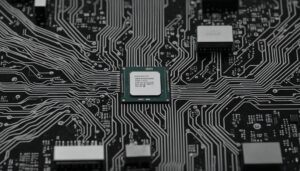
What Is Crypto Mining?
Crypto mining is the process of validating transactions and adding them to a blockchain ledger in decentralized networks like Bitcoin and Ethereum. Miners use computational power to solve complex mathematical problems, securing the network and creating new units of the cryptocurrency.
How Crypto Mining Works
- Blockchain and Transactions:

-
- Blockchain: A decentralized ledger that records all transactions across a network of computers (nodes).
- Transactions: When someone sends cryptocurrency, the transaction is broadcast to the network and grouped with others into a block.
- Consensus Mechanism:
-
- Proof of Work (PoW): The most common mining method, used by Bitcoin and many other cryptocurrencies.
- Other Mechanisms: Some networks use Proof of Stake (PoS) or other consensus algorithms, which involve different methods for validating transactions.
- Mining Process:
-
- Hash Function: Miners use computers to solve a hash function, a cryptographic puzzle that is difficult to solve but easy to verify.
- Nonce: Miners repeatedly change a variable called a nonce and re-hash the data until they find a hash that meets the network’s difficulty requirement.
- Block Reward: The first miner to solve the puzzle gets to add the block to the blockchain and receives a reward in the form of new cryptocurrency coins and transaction fees.
- Difficulty Adjustment:
-
- Dynamic Difficulty: The network adjusts the difficulty of the mining puzzle every few blocks to ensure that blocks are added at a steady rate (approximately every 10 minutes for Bitcoin).
- Mining Equipment:
-
- CPU Mining: Initially, mining could be done using a regular computer’s CPU.
- GPU Mining: Graphics Processing Units (GPUs) are much faster and more efficient than CPUs for mining.
- ASIC Mining: Application-Specific Integrated Circuits (ASICs) are custom-built hardware designed specifically for mining cryptocurrencies, offering the highest efficiency.
- Mining Pools:
-
- Collaboration: Individual miners often join mining pools, groups of miners that work together to solve blocks and share the rewards proportionally to their contributed computational power.
RELATED ARTICLE: A Beginner’s Guide to Cryptocurrency
Security and Environmental Concerns
- Network Security:
-
- Decentralization: Mining helps secure the network by decentralizing the validation process.
- 51% Attack: If a single entity controls more than 50% of the network’s mining power, they can manipulate transactions. This is considered a significant security risk.
- Environmental Impact:
-
- Energy Consumption: Mining, especially PoW, requires significant electricity, leading to concerns about its environmental footprint.
- Green Mining: Some efforts focus on making mining more sustainable by using renewable energy sources.
Notable Cryptocurrencies and Their Mining Mechanisms
- Bitcoin (BTC):
-
- PoW Algorithm: Uses SHA-256 for its mining process.
- Block Reward: The current reward is 6.25 BTC per block (as of the latest halving event).
- Ethereum (ETH):
-
- Transition to PoS: Initially used PoW (Ethash algorithm) but transitioning to PoS with Ethereum 2.0.
- Energy Efficiency: The shift to PoS aims to reduce energy consumption and improve scalability.
- Litecoin (LTC):
-
- PoW Algorithm: Uses Scrypt, which is more memory-intensive than Bitcoin’s SHA-256.
- Faster Blocks: Aims for a block time of 2.5 minutes compared to Bitcoin’s 10 minutes.
Getting Started with Crypto Mining
- Choose the Right Hardware:
-
- ASIC Miners: Best for Bitcoin and other PoW coins with high difficulty.
- GPUs: Suitable for a wide range of coins and for those starting out.
- Select a Mining Pool:
-
- Pool Research: Compare fees, payout structures, and pool size.
- Join a Pool: Register and connect your mining hardware to the pool.
- Software Setup:
Mining Software: Use software like CGMiner, BFGMiner, or EasyMiner for connecting to the network.z: Set up the software with the correct parameters for your chosen cryptocurrency and mining pool.

- Monitor and Optimize:
-
- Performance Monitoring: Use tools to monitor mining performance and hardware temperatures.
- Energy Efficiency: Optimize settings to balance performance and energy consumption.



















